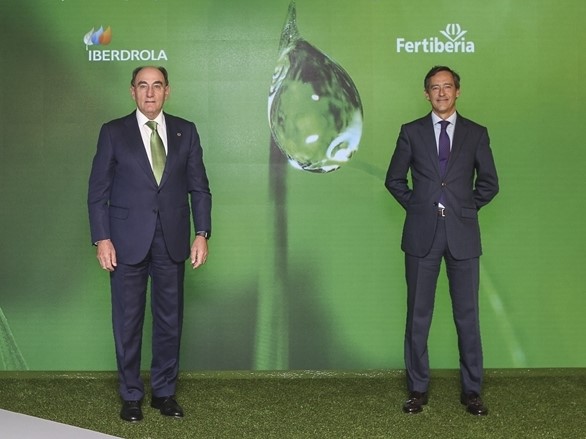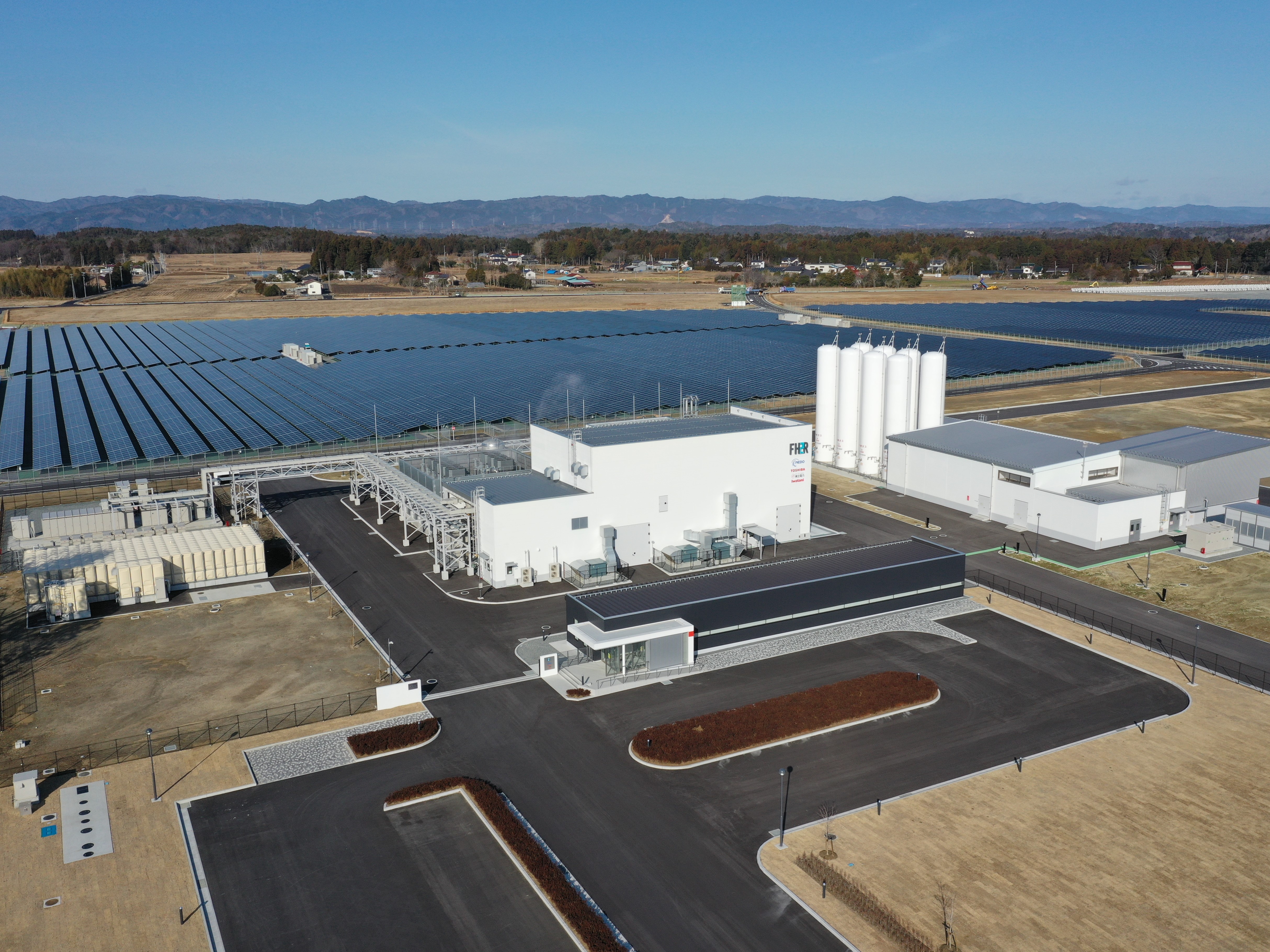New Alliance Boosts Green Hydrogen Production in Europe
Spanish firms Iberdrola and Fertiberia announced an investment of $2.1 billion into the installation of 800 megawatts of electrolyzers over the next seven years.

From left to right: Ignacio Galán, President of Iberdrola and Javier Goñi, President of Fertiberia. Image courtesy of Iberdrola
The green hydrogen industry is about to get a substantial boost from a newly formed alliance that is committed to investing more than $2.1 billion over the next seven years. Two Spanish companies—utility group Iberdrola and fertilizer producer Fertiberia—have joined forces and plan on installing 800 megawatts of green hydrogen production capacity during this time frame.
The two are already partners in a $178 million project that is anticipated to begin operation next year—the Puertollano facility, which consists of a 100-megawatt solar plant, a lithium-ion battery system with a storage capacity of 20 megawatt-hours and a 20-megawatt electrolyzer. The project generated 700 jobs during the development and construction phases. Upon completion, the facility will become the largest green hydrogen complex for industrial use in Europe and will offset the emission of 39,000 metric tons of carbon dioxide annually. The hydrogen produced will be used in the Fertiberia ammonia plant in Puertollano, which already is one of the most efficient ones in the European Union, with a production capacity of more than 200,000 tons per year. Fertiberia will modify its plant to use green hydrogen for manufacturing green fertilizers, and by doing so, it will reduce the needs of natural gas in the plant by more than 10 percent.
The partnership plans to develop three additional projects between 2023 and 2027, which could deliver 40 times the capacity of the first plant. The alliance would make Spain the first country to obtain 100 percent of its ammonia production from green energy sources and put Europe at the top of the world league of green hydrogen technology. The new alliance would also make Fertiberia the first company in the industry that is powered by green hydrogen, abiding by the future requirements of the Common Agricultural Policy.
Another innovative development that helps boost Europe on the first rank for green hydrogen production was announced earlier this year—NortH2, the product of a consortium comprising Gasunie, Groningen Seaports and Shell Netherland, which is expected to produce hydrogen by 2027.
READ ALSO: JPMorgan Chase to Restrict Fossil Fuel Project Funding
The Iberdrola/Fertiberia plan, targeting the delivery of 800 MW of electrolysis, is the equivalent to 20 percent of Spain’s national target—which requires the installation of 4 gigawatts by 2030—and would ensure that about 25 percent of the hydrogen currently consumed in Spain is emissions-free. Specifically, the alliance’s green hydrogen plan is estimated to avoid the emission of more than 400,000 metric tons of carbon dioxide.
The plan will also create nearly 4,000 qualified jobs—2,000 of them by 2023, through 500 local suppliers. In addition, it will form an industrial hub focused on the manufacturing of electrolyzers in Spain while reducing energy dependence and use of fossil fuels. Finally, the joint investment will contribute to the reactivation of the industry and the economy.
Around the world

Fukushima Hydrogen Energy Research Field (FH2R). Image courtesy of Toshiba Energy Systems & Solutions Corp.
Aside from the progress made on the European side, Saudi Arabia has a massive project underway—a(nother) futuristic city in the desert on the Red Sea called Neom. This $500 billion city is anticipated to house 1 million people who will benefit from amenities such as flying taxis and robotic domestic help. And the energy product that will be powering is not oil, but green hydrogen. For the past four years, U.S. gas company Air Product & Chemicals has been working on the green hydrogen plant for Neom. The plant is powered by 4 gigawatts of wind and solar projects that are scattered throughout the desert.
In Japan, near Fukushima, a new green hydrogen plant opened in February. Behind it are Toshiba Energy Systems & Solutions Corp., the New Energy and Industrial Technology Development Organization, Tohoku Electric Power Co. and Iwatani Corp., which have been working on the facility since 2018.
In Australia, near Pilbara, a new project is about to break ground—the Asian Renewable Energy Hub—and will use 1,600 large wind turbines and 30 square miles of solar panels to power a 23-gigawatt electrolysis factory that would create green hydrogen for Singapore. In addition, the University of New South Wales, in partnership with GHG, a global engineering firm, has created a home-based system called LAVO. This system uses solar energy to generate and store green hydrogen in-home systems, which is converted back to electricity as needed.
In the U.S., the Los Angeles Department of Water and Power is helping fund the construction of a green hydrogen-fueled power plant in Utah that is slated to come online in 2025. Moreover, in southern California, a company called SGH2 announced plans to build a large facility to produce green hydrogen for the region, but instead of electrolysis, it will use waste gasification. This method, they say—which heats various types of waste to high temperatures that reduce them to their molecular compounds that are then bind with hydrogen—can make green hydrogen more cheaply than through electrolysis.
California has also passed a Low Carbon Fuel Standard in 2009 to promote electric vehicles and hydrogen vehicles. Moreover, in mid-October, a new coalition formed—the Western States Hydrogen Alliance—with a clear mission to deploy hydrogen fuel cell technology and infrastructure to replace diesel trucks, buses, locomotives and aircraft.







You must be logged in to post a comment.